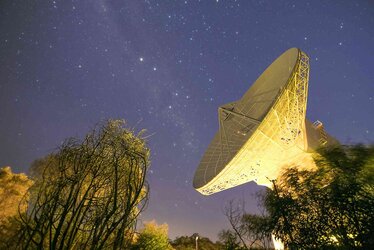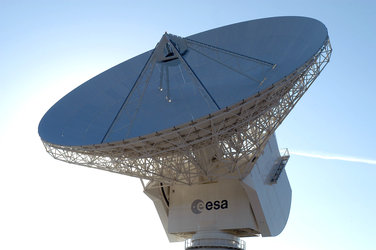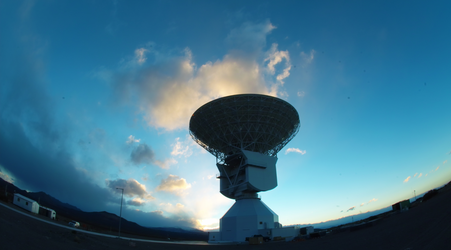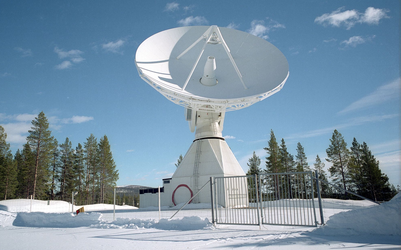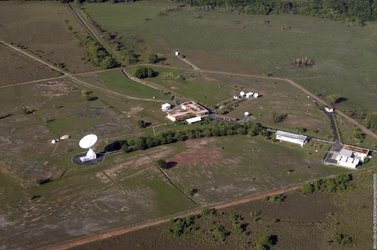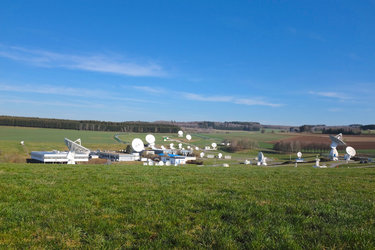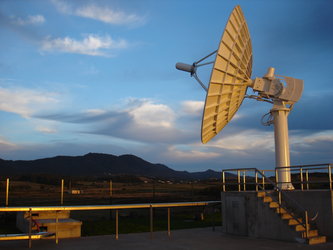Deep space maintenance deep in Australia's bush
ESA's giant 35m ground stations require regular maintenance and periodic mid-life upgrades to keep them working in tip-top condition, communicating with the Agency's growing fleet of spacecraft millions of kilometres from home.
This month, a team of ESA experts together with industrial partners has deployed to the hot outback of New Norcia, Australia, location of the Agency's first 35m deep-space station, DSA-1. The team will undertake an intensive, 12-day programme of repairs and upgrades, enhancing technical reliability and boosting the station's capability to track and communicate with sophisticated missions orbiting Earth, Mars and Venus.
The giant 35-metre station was taken off-line on 30 November, after lengthy preparations and rescheduling with other ESTRACK stations to support New Norcia's communications workload. In recent months, the station has been assigned telecommand upload and data download tasks for Cluster, Mars Express, Rosetta, Venus Express and XMM-Newton.

The Agency's core ESTRACK network comprises 13 terminals sited at nine stations in six countries.
"We initially requested 14 days of off-line time for our upgrade work, but all we could get was 12 days due to the high demand. This means we will work extended hours here at New Norcia to finish on time," said Friedrich Müller-Stute, project officer from ESOC, ESA's European Space Operations Centre, Darmstadt, Germany.
Improving station reliability and performance
The work will primarily focus on improving the reliability of the station's cooling systems, which moderate the temperature of the two 20-kilowatt high-power amplifiers that are used to boost the strength of signals sent to spacecraft orbiting millions of kilometres away.

In addition to several other repair and upgrade tasks, work will be done to improve the performance of the mechanical systems that enable the giant 35m dish antenna to rotate and elevate. New Norcia station was built in 2002 and could initially provide a highly accurate rotation and elevation capability of 0.4 degrees/second - so it would make a complete revolution in about 15 minutes.
"The original rotation speed is proving to be too slow, and it is taking too long to rotate to a new pointing position or to 'unwind' back into the starting position. So we will boost the rotation and elevation speed to one degree per second, which will really help," says ESOC's Udo Kugel, one of the project engineers.
New Norcia's mechanical movable structure weighs 580 tonnes, and the antenna and associated terminal equipment comprise one world's largest devices for telemetry, tracking and telecommand (TT&C) applications.
Intensive work deep in the Australian bush
The extended team on site for the project includes engineers from ESA, contractor engineers and technicians from industrial partners in Germany, Canada and Australia, and engineers and support personnel from the station's operators, Stratos, who manage the New Norcia and Perth ESTRACK stations on behalf of ESA.
The long hours required by the ESA project fit right in with the famous 'can-do' approach of Western Australia's hard-working rural population.
ESA and contractor team are 'right at home'

"We already feel right at home with locals. The head of the district volunteer fire brigade gave us a very nice welcome, and thanked us for the water trailer that was furnished by ESA last year to support their efforts at protecting the station and its surroundings. They made good use of it fighting bush fires last week," said Müller-Stute.
In a telephone call on 30 November from New Norcia, the ESA engineering team reported clear, dry spring conditions with the temperature at a very hot 35C, forecast to rise sharply at week's end.
The summertime temperatures can easily hit 40C, and it is surprising to see how much this can affect the equipment on site.
Conditions at the station, which is unmanned (and auto-controlled from ESOC, in Germany) during routine operations, are austere; in addition to the giant terminal and its base structure, there are just the minimum number of support buildings, including an on-site power station, a control room and several storage and site maintenance sheds.
The site is 130 km North of Perth and approximately 30 minutes by road to the nearest town.
Despite the threat of fire, the location is ideal for tracking spacecraft. It is far from interference from any urban population, the climate is dry and the site is elevated approximately 250 m above sea level; the skies are clear for much of the year.
"Our regular maintenance has to address the strong effects of heat and sunlight, which degrade cables, cable fasteners, pipes and anything made of plastic. The summertime temperatures can easily hit 40C, and it is surprising to see how much this can affect the equipment on site," said ESA's Michel Dugast, project leader and also based at ESOC.
Dugast adds that: "Supporting our science, astronomy and other important missions means that there are very high technical expectations for New Norcia and all the ESTRACK stations. Our planning for New Norcia allows for just 5 hours per year of unplanned off-line time per year. This station really has to perform - and upgrades like these are crucial for ensuring success."



